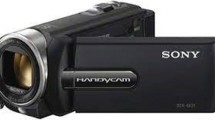Abstract
Africa faces a triple burden of disease; HIV, tuberculosis and malaria. Despite this, its population is expected to double over the next 45 years. There is a dire shortage of medical specialists and many countries lack suitably qualified doctors to train medical specialists. Videoconferencing offers the opportunity to share scarce human resources. In the South African province of KwaZulu-Natal there are only three paediatric surgeons who meet the clinical needs of the province and offer training in paediatric surgery to general surgeons in training. This paper reports an 18-month experience using videoconferenced postgraduate medical education in paediatric surgery in a South African setting. Seventy-one videoconference postgraduate teaching sessions of 1 h duration were broadcast to up to four sites in South Africa. Teaching sessions were in a lecture format with discussion thereafter. On average, 18 people at receive sites took part in each session in 2005 and 37 in 2006. There was universal satisfaction with videoconferenced teaching from those teaching and the participants at the distant sites. There is a demand to extend this project to other parts of South Africa and into Africa, where the shortage of paediatric surgeons is acute.
Similar content being viewed by others
References
United Nations Development Program (2005) Human development Report 2005. International cooperation at a crossroads: aid, trade and security in an unequal world, pp 236–239
GlobalHealth Council (2006) HIV/AIDS http://globalhealth.org/view_top.php3?id=227
WHO (2004) The world health report 2004: changing history. http://www.who.int/whosis/menu.cfm?path=whosis,burden&language=english
Population Division of the Department of Economic and Social Affairs of the United Nations Secretariat (2005) World population prospects. The 2004 revision highlights. http://www.un.org/esa/population/publications/WPP2004/2004Highlights_finalrevised.pdf
World Health Organization (2006) Global Atlas of Health. http://globalatlas.who.int/globalatlas/dataQuery/reportData.asp?rptType=1
World Health Organization (2006) World Health Report 2006. Working Together for Health xviii-xix http://www.who.int/whr/2006/en/
Institute for International Medical Education (2005) Database of Medical Schools http://www.iime.org/database/africa/index.htm
African Regional Health Report (2006) World Health Organization. Geneva, pp 1–170
Kuremu RT, Abdeen H (2006) Impact of part-time private practice on Medical Education in Kenya—a personal opinion. East Central Afr J Surg 11:5–7
Kroeker KI, Vicas I, Johnson D et al (2000) Residency training via videoconference—satisfaction survey. Telemed J E Health 6:425–428
Miller G, Levesque K (2002) Telehealth provides effective paediatric surgery care to remote locations. J Pedtr Surg 37:752–754
Bickler S, Rode H (2007) Surgical services for children in developing countries. Bull World Health Organ 80:829–835
Health Systems Trust (2006) Health statistics. http://www.hst.org.za/healthstats/index.php?indtype_id=001002
Odell EW, Francis CA, Eaton KA et al (2001) A study of videoconferencing for postgraduate continuing education in dentistry in the UK—the teachers’ view. Eur J Dent Educ 5:113–119
Wild DJ, Wiggins GD (2006) Videoconferencing and other distance education techniques in chemoinformatics teaching and research at Indiana University. J Chem Inf Model 46:495–502
Midiri G, Papaspiropoulos V, Coppola M et al (2003) Telementoring in surgery. G Chir 24:382–384
Seixas CA, Mendes IA, de Godoy S, Costa AL (2004) Implantation of a videoconferencing system applied to nursing research and teaching environments. Rev Bras Enferm 57:620–624
Misra UK, Kalita J, Mishra SK, Yadav RK (2004) Telemedicine for distance education in neurology: preliminary experience in India. J Telemed Telecare 10:363–365
Allen M, Sargeant J, MacDougall E (2002) Videoconferenced continuing medical education in Nova Scotia. J Telemed Telecare 8(Suppl 3):S3–S4
Hadley GP, Mars M (1999) An audit of clinical teaching in paediatric surgery to interns and surgical registrars. Med Educ 33:745–748
Information & Communication for Development (IC4D) (2006) Global Trends and Policies. http://web.worldbank.org/WBSITE/EXTERNAL/DATASTATISTICS/0contentMDK:20459133∼menuPK:1192714∼pagePK:64133150∼piPK:64133175∼theSitePK:239419,0 0.html
Geissbuhler A, Ly O, Lovis C, L’Haire JF (2003) Telemedicine in Western Africa: lessons learned from a pilot project in Mali, perspectives and recommendations. AMIA Annu Symp Proc, pp 249–253
Africa: better IT connectivity can unleash economic potential. United Nations. http://www.un.org.apps/news/story.asp?newsid=23870&Cr=information&Cr1=technology
Noyek AM, Skinner H, Davis D et al (2005) Building bridges of understanding through continuing education and professional development of Arabs and Israelis. J Contin Educ Health Prof 25:68–75
McCrossin R (2001) Successes and failures with grand rounds via videoconferencing at the Royal Children’s Hospital in Brisbane. J Telemed Telecare 7(Suppl 2):25–28
Author information
Authors and Affiliations
Corresponding author
Rights and permissions
About this article
Cite this article
Hadley, G.P., Mars, M. Postgraduate medical education in paediatric surgery: videoconferencing—a possible solution for Africa?. Pediatr Surg Int 24, 223–226 (2008). https://doi.org/10.1007/s00383-007-2085-5
Accepted:
Published:
Issue Date:
DOI: https://doi.org/10.1007/s00383-007-2085-5




